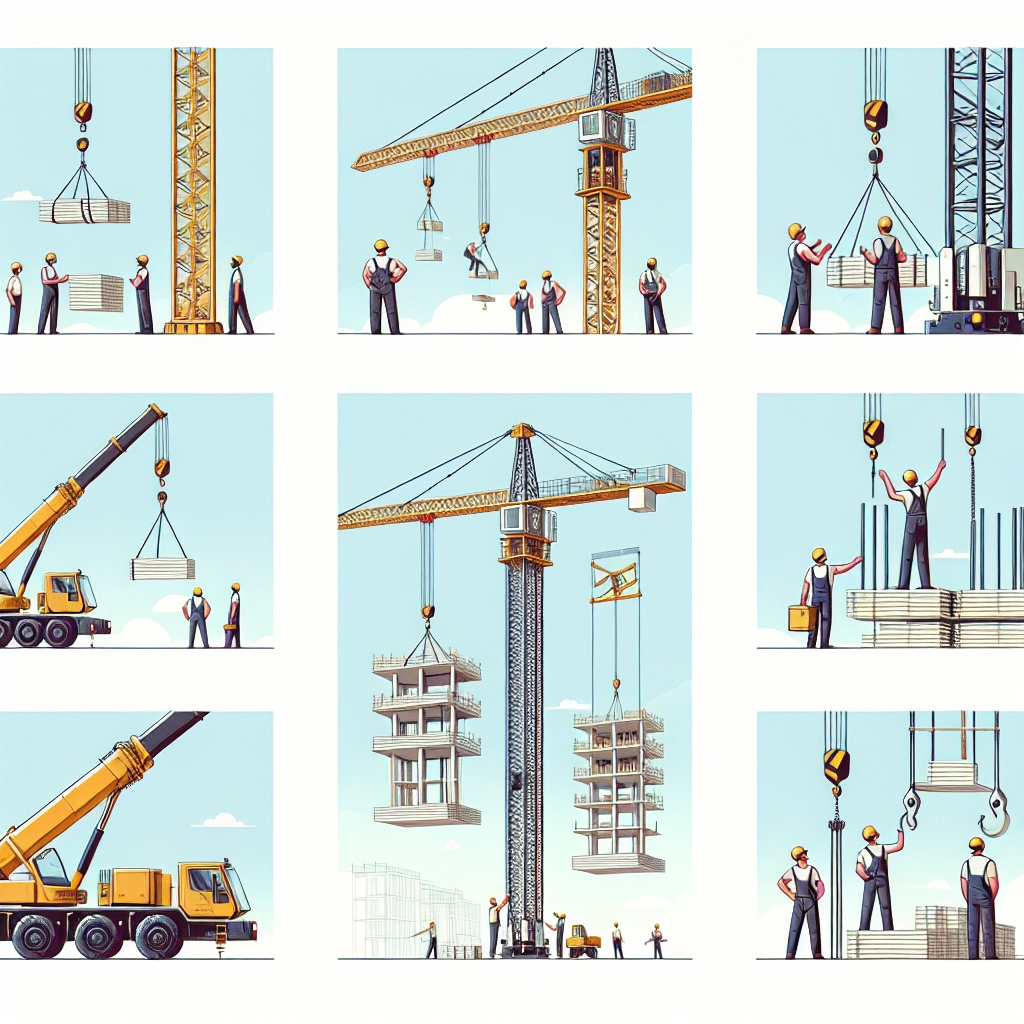
- Published on
- Authors

- Name
- ric de yuga 😄
🏗️ Unraveling the Mystery: How Do Tower Cranes Erect Themselves? 🏗️
Tower cranes, the towering giants of the construction industry, have long been a source of fascination for onlookers. These modern marvels can reach dizzying heights, seemingly defying gravity as they lift heavy loads with ease. But have you ever wondered how these colossal structures manage to erect themselves? In this blog post, well delve into the intriguing process behind self-erecting tower cranes.
The secret lies in a combination of clever engineering, precise mechanics, and a touch of construction magic:
- 🏰 The tower crane is delivered to the construction site in sections.
- 🔧 A skilled crew assembles the base and mast of the crane.
- 🌿 The crane then begins to "grow" as it adds sections to its own structure.
Prepare to be amazed as we unravel the mystery behind these self-building wonders of the construction world.
🧩 The Anatomy of a Self-Erecting Tower Crane 🧩
To understand how tower cranes erect themselves, it's essential to first understand their basic anatomy. A typical self-erecting tower crane consists of several key components:
| Component | Function |
|---|---|
| Base | Provides stability and support for the crane |
| Mast | The vertical tower that forms the crane's main structure |
| Jib | The horizontal arm that extends from the mast |
| Counterweights | Balances the weight of the load and ensures stability |
| Operator's Cab | Houses the crane operator and control systems |
Each of these components plays a crucial role in the self-erection process, working together to create a stable and efficient lifting machine.
🏗️ The Self-Erection Process: A Step-by-Step Guide 🏗️
Now that we've covered the basics, let's dive into the step-by-step process of how a tower crane erects itself:
Base Assembly: The crane's base is delivered to the construction site and assembled on a pre-prepared foundation.
Mast Assembly: The mast sections are then stacked and bolted together, forming the crane's main vertical structure.
Jib Assembly: With the mast in place, the jib is attached to the top of the mast and secured.
Counterweight Installation: Counterweights are added to the rear of the crane to balance the weight of the load and ensure stability.
Self-Climbing Mechanism: Using a hydraulic or electric motor, the crane begins to lift itself, adding new mast sections as it climbs.
Reaching Full Height: This process continues until the crane reaches its desired height, with the operator's cab and control systems installed along the way.
Throughout the self-erection process, safety is of utmost importance. Skilled technicians and engineers oversee every step, ensuring that the crane is assembled correctly and operates safely.
🌟 The Advantages of Self-Erecting Tower Cranes 🌟
Self-erecting tower cranes offer several key advantages over traditional cranes that require external assembly:
- Efficiency: Self-erection significantly reduces the time and labor required to assemble the crane, allowing construction projects to stay on schedule.
- Cost-Effective: By eliminating the need for external cranes or heavy-lift helicopters, self-erecting cranes can help reduce overall construction costs.
- Versatility: Self-erecting cranes can be used in a wide range of construction projects, from high-rise buildings to bridges and beyond.
As construction technologies continue to advance, self-erecting tower cranes are becoming an increasingly popular choice for their efficiency, cost-effectiveness, and versatility.
🔍 The Future of Self-Erecting Tower Cranes 🔍
As the construction industry evolves, so too do the technologies behind self-erecting tower cranes. Future advancements may include:
- Automation: Fully automated self-erection processes, reducing the need for human intervention and enhancing safety.
- Modular Designs: Modular crane components that can be easily transported and assembled on-site, further streamlining the self-erection process.
- Smart Sensors: Integrated sensors and monitoring systems that provide real-time data on the crane's performance and stability.
By continually pushing the boundaries of what's possible, the future of self-erecting tower cranes looks bright, promising even greater efficiency and safety in the construction industry.
💡 Conclusion: A Marvel of Modern Engineering 💡
The ability of tower cranes to erect themselves is a testament to the ingenuity and innovation of modern engineering. By combining precise mechanics, clever design, and advanced technologies, these self-building giants have revolutionized the construction landscape.
So, the next time you see a tower crane reaching towards the sky, take a moment to appreciate the incredible engineering behind its self-erection process. From the ground up, these marvels of modern construction are truly a sight to behold.
